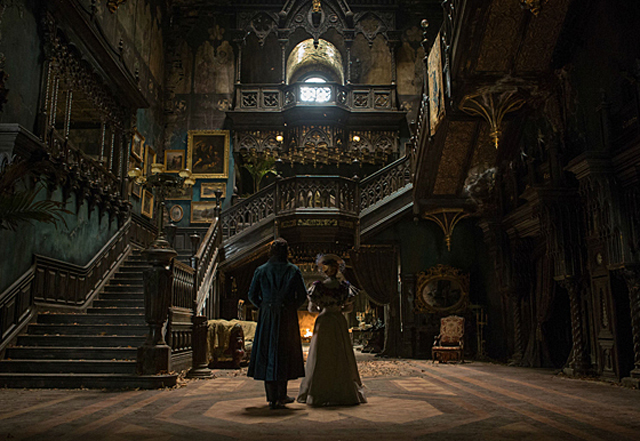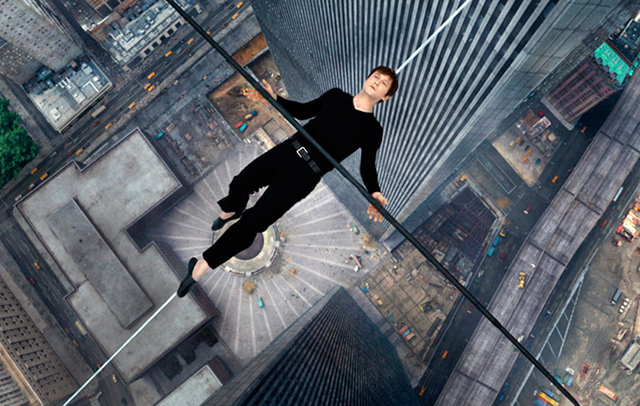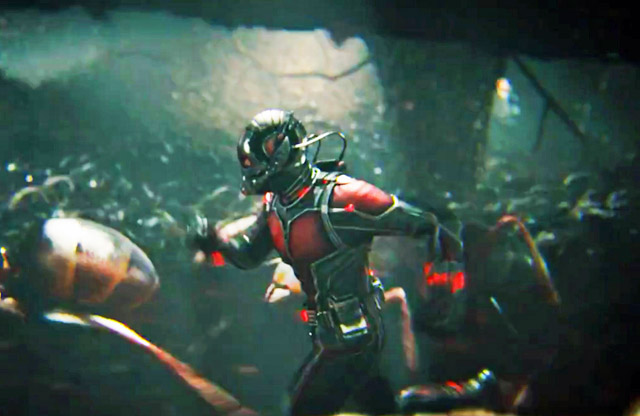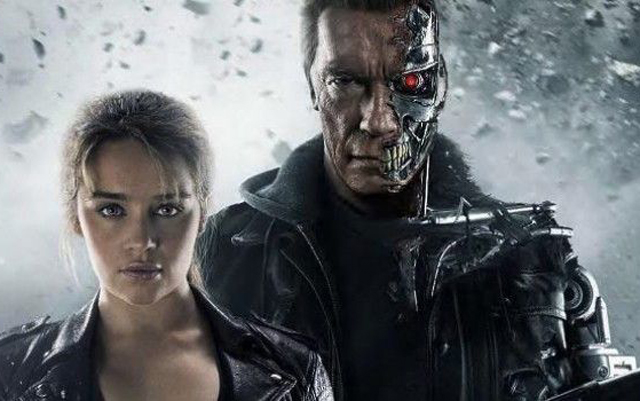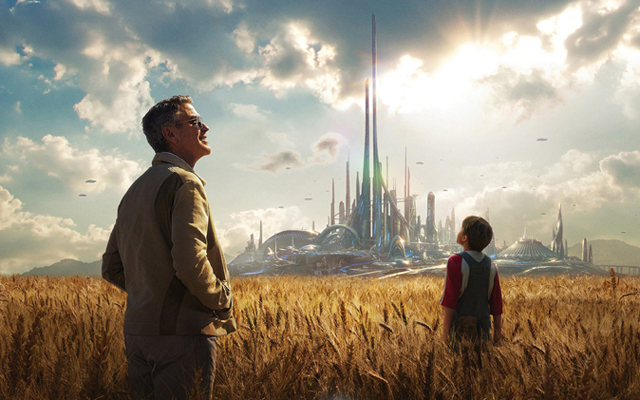The Halloween season always has room reserved for a horror entry or two. And usually the best kinds of horror films are given the spotlight at this time. When you’re a bad horror movie, you usually get shipped off to the beginning of January, where all the worst films go to be forgotten. But, when you’re a high-quality horror film, a late October release is all the more timely. Horror fans prefer to be shocked out of their wits and have their tolerances for gore challenged, because it’s a part of the entertainment. It’s much more of a communal audience experience watching a horror film in a theater than any other type of genre, because the entertainment comes from our shared reactions. Now, typically, horror films are low rent productions that make due with their limitations and will oftentimes be tongue-in-cheek experiences, depending on the execution. But, there are also movies that fall into the category of prestige horror films, where the budgets and production values are increased significantly and the end result can be seen as artful in the film community, without betraying the rules of the genre. A prestige horror film can sometimes come from a magnificently executed and high value production of a story with horror elements, like The Silence of the Lambs (1991) and The Exorcist (1973) or from a highly artistic rendering of the genre tropes through an acclaimed director’s vision, like Stanley Kubrick’s The Shining (1980). This Halloween season offers us a new horror film of this second type from one of Hollywood’s most unique visionaries.
Mexican born filmmaker Guillermo del Toro has been something of renaissance man in Hollywood in terms of trying different genres, but always with his own unique vision. He has taken on Science Fiction (2013’s Pacific Rim), Superheros (2004’s Hellboy and it’s 2008 sequel), as well as Fantasy and War Drama (2006’s Pan’s Labyrinth). But, perhaps his favorite genre to tackle above all the others is horror, and in particular, ghost stories. This was evident in his earlier films like Cronos (1993) and The Devil’s Backbone (2001), both of which centered around themes of death and the supernatural. In fact, all of del Toro’s movies have a little bit of the macabre to them, including something as rollicking as Pacific Rim. It’s very clear from watching any of his films that the man loves horror and his work often reflects that same love. At the same time, he’s also a filmmaker who knows when to have a little fun while working within the confines of a genre and his movies are often purposefully over the top, which gives them an extra level of entertainment. While he isn’t consistently sticking with a particular genre, his movies still almost always have a sense of character to them, which has made him a highly regarded director. This year, he returns to his roots and has crafted another ghost based horror film called Crimson Peak. It’s another stylish production from the visually driven filmmaker, but here for the first time, he is working within a Victorian Gothic setting. It’s a style that’s well suited for a prestigious horror movie, but through the eyes of Guillermo del Toro, it becomes something even more incredible.
The story, which was co-written by Guillermo del Toro himself, follows the supernatural journey of Edith Cushing (played by Mia Wasikowska), an aspiring writer and only child of a New York based mining tycoon (Jim Beaver). Since she was a little girl, she has been haunted by the ghost of her departed mother who periodically returns to tell her daughter to “beware of Crimson Peak.” As an adult, she crosses paths with an English playboy named Thomas Sharpe (Tom Hiddleston) who seeks financial assistance with a mining venture that he wants to exploit on his home estate. Edith is charmed by the stranger, but her father disapproves of the man and Edith’s childhood friend Dr. Alan McMichael (Charlie Hunnam) has his suspicions of him as well. Edith nevertheless pursues a courtship with Thomas and agrees to marry him after she tragically loses her father in a sudden “accident.” After the wedding, Thomas and Edith return to England where they begin married life in a decrepit old mansion called Allerdale Hall, which sits atop Thomas’ mine and is slowly sinking into the red clay beneath it. The couple try to make due with the inconveniences of the house, but Edith feels unease under the watchful eye of Thomas’ overbearing sister Lucille (Jessica Chastain), who becomes more menacing the longer Edith is there. Not only that, but Edith is visited by ghosts who haunt the house, each appearing more grotesque than the last. Though frightened by them at first, Edith soon discovers that the ghosts are trying to deliver her a message, one which becomes more clear once she learns that the red clay that Thomas is digging up has given the hilltop she lives on another nickname by the local village folk who live near it; Crimson Peak.
Overall, it’s a very straight forward ghost story, which serves del Toro’s film well. Like most of his other movies, it’s not about the intricacy of the plot, but the way it’s presented. Guillermo del Toro works within the genre confines of horror, sometimes even embracing it’s cliches, all with the purpose of giving it his own spin. Del Toro very much likes to make his movies work as examples of the genre, and not as parodies of it. I can honestly see Crimson Peak standing confidently alongside the classic Hammer horror movies of the 60’s and 70’s, which themselves were purposely over-the-top. Guillermo also milks the Victorian aesthetic and tone very well here, making the atmosphere of the film feel even more genuine. While not particularly original, I did enjoy what this movie was trying to be and I felt that it overall worked as a genre flick. Is it the scariest movie ever made? No, but the atmosphere that del Toro builds up is enough to satisfy die hard horror fans. There are some especially creepy moments in the movie, particularly it goes silent for some moments. For the most part, I felt that the movie was at it’s strongest when it just let the atmosphere of the scene speak for itself, with the moody lighting and the eerily tuned sound design taking over. The story is not particularly deep; you already know where the plot is going long before it gets there. But at the same time, I believe that’s del Toro’s intention. He purposely takes story shortcuts in order to spend more time exploiting the tension and horror of each particular scene; something he also did effectively well with sci-fi in Pacific Rim. Some may find the long drawn out scenes of dark, shadowy halls tedious, but I felt that Guillermo’s style really shone in those moments. It’s especially refreshing to see a movie get it’s best moments not from a jump scare, but from the eerie build up to the frights. The scenes where the ghost Edith’s mother slowly reveals herself across a shadowy corridor still give me chills and has me looking over my shoulder.
But, while the ghosts are frightening in design, and the atmosphere is superb, there were some unfortunate cinematic elements that sadly took me out of the film at times. In particular, I had a problem with the obvious use of CGI in the movie. Now, Guillermo del Toro isn’t a novice when it comes to using CGI. In fact, he used it to great effect in Pacific Rim. But, he’s also been a known to use some really cool looking practical effects as well. In particular, the amazing make-up used in Pan’s Labyrinth and Hellboy, where he brought to life some amazing creatures that become all the more terrifying because of their seemingly organic presence on screen. What helped those movies out was a balance between the different kinds of effects needed. In Crimson Peak, the CGI seemed to be favored a bit too heavily and it robs the movie of some of it’s effectiveness as a result. There are CGI elements that do work, like a ghostly, pale shadow appearing out of the dust in an attic over a wheelchair, but there are others that look too artificial to be taken seriously. I felt that the appearances of the many ghosts at Crimson Peak weren’t quite as horrifying as Guillermo had intended them to be, and that’s because the CGI used to create them looks a bit too cartoonish. While their designs are unique (some of which del Toro illustrated himself), their animation left something to be desired and I could never fully feel scared as I was watching these ghosts chasing poor Edith through the house. Had Guillermo del Toro used a more subtle approach with the ghosts in the movie, like old fashioned green screen and make-up effects, I might have bought the effect much better, but instead the movie suffers from unrealistic ghosts in a movie that’s dependent on them being scary.
But, the inconsistency of the film’s effects are balanced out by some incredibly effective, and sometimes scary performances from the cast. Mia Wasikowska may have the most difficult time carrying much of this film and trying to convince us that she is seeing spirits all around her, but she does an effective job of giving Edith the depth of character needed to pull it off. Edith, if handled poorly by another actress, could’ve turned into another boring ghost story protagonist, relegated to just reacting to the horrors around her instead of taking action. But Mia manages to avoid portraying Edith as one note and part of the character’s charm is her curious nature, which comes out perfectly in her intelligent performance. Tom Hiddleston also manages to perfectly embody the character of a playboy scoundrel without sinking too far into stereotype, and his character actually gets one of the more interesting arcs in the story. But, if this movie belongs to anyone in particular, it’s Jessica Chastain as the sinister Lucille. Chastain is relishing her role here, chewing up all kinds of scenery and managing to become even more chilling than the ghosts that haunt the mansion. I just love the way that she goes over-the-top, but not to the point where it becomes detrimental to the story. She’s unhinged, but grounded. There’s an especially creepy bit with a spoon midway through the movie that is so perfectly creepy. It’s the kind of performance that really sticks with you and it’s a testament to Jessica Chastain’s talent as an actress that she could make the insanity of this character feel so believable. She’s by far the best thing about this movie and is probably the thing most worth watching overall, even with all the eye candy on display.
Of course, given that this is a Guillermo del Toro movie, there has to be something said about the production design. For one thing, del Toro proves to be surprisingly adept with the Victorian period details, making the setting feel for the most part authentic to it’s time. Likewise, del Toro also puts lavish excess into the movie when needed, particularly when it comes to the mansion itself. The decrepit haunted house that serves as the setting of this movie feels very much like a Guillermo del Toro creation, with it’s twisted and foreboding nature. Even simple design choices, like a patch of snow in the foyer originating from a hole in the ceiling, as well as the spiked archways in the halls, carry the del Toro signature. Guillermo is probably only rivaled by Tim Burton for being identified by a particular aesthetic with his movies, which favors medieval Gothic inspiration along with a little Grand Guignol grotesquery thrown in. In this movie, the designs used on the mansion help it to stand out and it almost makes the house a character in it’s own right. I particularly like the way that the battered state of the home belies a little bit of what the mansion was like in it’s glory days, which makes it feel even more eerie once you take in the details. There’s also a neat visual idea of the house sinking into the red clay that lies below it’s foundation. This almost gives the audience the visual impression that the house bleeds, given the bright red hue of the clay once it liquefies and seeps through the floors and walls. It’s a grotesque reinforcement of the mansion’s sinister nature, though it can come off to some as a little heavy handed to some. I found it to be an interesting visual idea that stays true to the style of it’s visionary director.
Crimson Peak works as both a throwback to traditional ghost stories and as an unconventional horror movie. Sure, it’s predictable and simplistic in many ways, but that’s part of the charm of it. I just wouldn’t go into this movie expecting to be scared out of your mind. This movie is much more of a triumph of production design, with some of the most beautiful imagery that you’ll see on the big screen this year. The gore and horrifying scares are only in here to give this film it’s character as a horror flick. And while not every idea or design hits it’s mark, like the less then effective CGI, the movie will still have enough for everyone to enjoy. It has some effectively creepy atmosphere, some really standout performances, and also a surprisingly macabre sense of humor, which is another trademark of Guillermo del Toro’s style. Compared to the director’s other films, I would say that this is a very solid exercise in genre film-making and not a particularly game-changing triumph. It certainly doesn’t resonate as emotionally as Pan’s Labyrinth, but at the same time I don’t think Guillermo was trying to reach that far anyway. This is his love letter to the ghost stories and horror films that he grew up with and he wanted to bring his own visual style into this kind of tale to see if he could do it justice, and in that regard, I believe he hit his mark. So, I highly recommend Crimson Peak as a viewing experience, especially if you’re looking for something effectively spooky this Halloween season. If anything, it’s just refreshing to see a horror movie that doesn’t have to rely on sudden jumps to scare it’s audience and instead relies on the dread of what may lurk around the corner in the shadows.
Rating: 8.5/10
